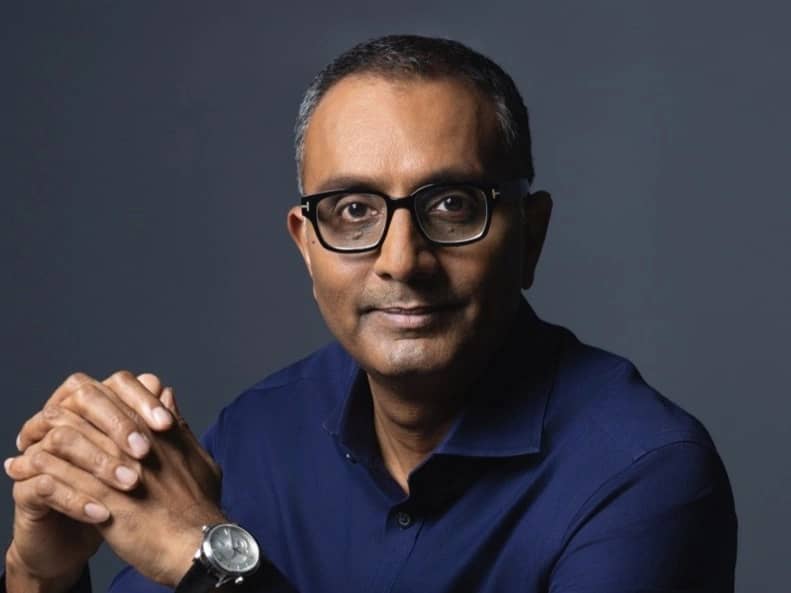위키 구독하기
Share wiki
Bookmark
Ashok Venkateswaran
Ashok Venkateswaran
**Ashok Venkateswaran(아쇼크 벤카테스와란)**은 마스터카드 부사장으로, 아시아 태평양(APAC) 지역 디지털 자산 및 블록체인 총괄을 맡고 있습니다. 그는 스테이블코인, 중앙은행 디지털 화폐(CBDC) 및 토큰화된 자산과 같은 신흥 기술과 관련된 회사의 전략 및 제품 개발을 지휘하고 있습니다. 20년 이상의 금융 서비스 및 컨설팅 경험을 바탕으로 디지털 자산을 기존 결제 생태계에 통합하는 것에 대해 자주 강연하고 있습니다. [1] [2]
교육
Venkateswaran(벤카테스와란)은 대학교 입학 전 교육을 Woodstock International School에서 받았습니다. 이후 미국에서 고등 교육을 받아 Drexel University에서 금융학 학사(B.S.) 학위를 취득했습니다. 그의 금융 분야 학업 배경은 금융 서비스와 기술의 교차점에 꾸준히 위치해 온 그의 경력의 기반이 되었습니다. [3] [4] [16]
경력
Venkateswaran(벤카테스와란)은 2000년에 기술 및 컨설팅 분야에서 책임이 점점 커지는 여러 직책을 역임하며 직업 생활을 시작했습니다. 그는 IFrame GmbH에서 프로젝트 매니저로 시작하여 2004년 초까지 그 직책을 유지했습니다. 그 후 BusinessEdge Solutions에 참여하여 엔게이지먼트 매니저로 4년 이상 근무하며 IT 서비스 및 컨설팅에 집중했습니다. 2009년에는 대서양을 횡단하는 주식 거래 회사인 NYSE Euronext에서 프로그램 매니저 역할을 맡으며 금융 시장 부문으로 전환했습니다. 4년 이상 근무하는 동안 거래소 운영 내 기술 및 비즈니스 프로그램 관리에 참여했으며, 이는 이후 블록체인 기술과의 작업의 기반이 되었습니다.
2013년 말, Venkateswaran(벤카테스와란)은 EY(Ernst & Young)에 합류하여 금융 서비스 기관을 전문으로 하는 컨설팅 이사가 되었습니다. 싱가포르를 거점으로 은행 및 자본 시장 부문의 고객 경험 및 디지털 전략 업무를 주도했습니다. 그의 업무에는 운영 효율성을 높이기 위한 IT 전략, 데이터 최적화 및 디지털 전환에 대한 금융 기관 자문이 포함되었습니다. EY에서 4년간 근무한 후, 2018년부터 2019년 초까지 분산형 데이터 네트워크인 Bluzelle의 영업 및 제품 개발 이사로 블록체인 스타트업 분야에 잠시 진출했습니다. [5] [4] [3] [17]
마스터카드
2019년 2월, Venkateswaran(벤카테스와란)은 마스터카드에 합류하여 아시아 태평양 지역의 새롭게 설립된 디지털 자산 및 블록체인 업무를 주도했습니다. 그의 공식 직함은 부사장, APAC 디지털 자산 및 블록체인 총괄; 부사장, 디지털 자산 및 블록체인 B2B 제품; 부사장, 디지털 자산 및 스테이블코인 등 다양한 포럼에서 약간의 차이를 보이며 언급되었습니다. 이 고위직에서 그는 마스터카드의 디지털 통화 및 블록체인 기술에 대한 전략, 고객 참여 및 제품 로드맵을 담당하고 있습니다. [1] [3]
그의 업무에는 은행, 금융 기관 및 핀테크 기업을 포함한 마스터카드 고객과 협력하여 디지털 자산을 사용하는 솔루션을 개발 및 구현하는 것이 포함됩니다. 여기에는 스테이블코인, CBDC, 토큰화된 은행 예금 및 토큰화된 실물 자산(RWA)이 포함됩니다. 그의 역할의 주요 초점은 기존 금융(TradFi) 세계와 신흥 디지털 자산 생태계 간의 가교 역할을 하여 새로운 결제 솔루션이 기존의 기존 금융 인프라와 상호 운용될 수 있도록 하는 것입니다. 그의 지역 내 리더십 하에 마스터카드는 소매 CBDC에 대한 잠재적 솔루션을 테스트한 홍콩 통화청의 e-HKD 시범 프로그램을 포함한 여러 주요 업계 이니셔티브에 참여했습니다. [2] [6]
디지털 자산 및 CBDC에 대한 견해
Venkateswaran(벤카테스와란)은 특히 중앙은행 디지털 화폐를 중심으로 디지털 통화의 실질적인 구현에 대한 마스터카드의 견해를 대변하는 대표적인 인물입니다. 2023년 11월 싱가포르 핀테크 페스티벌에서 주목할 만한 공개 논평에서 그는 주류 사용으로 가는 길에 대한 실용적이고 신중한 관점을 제시했습니다. [6] [7]
잘못된 내용이 있나요?
